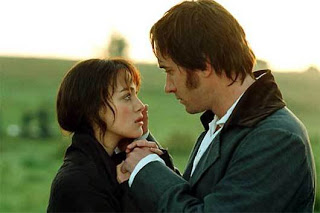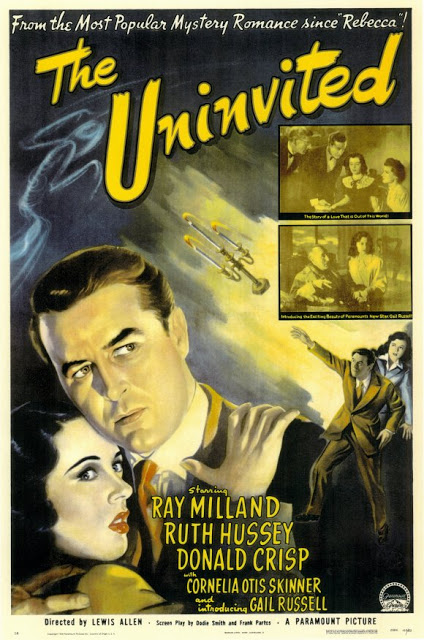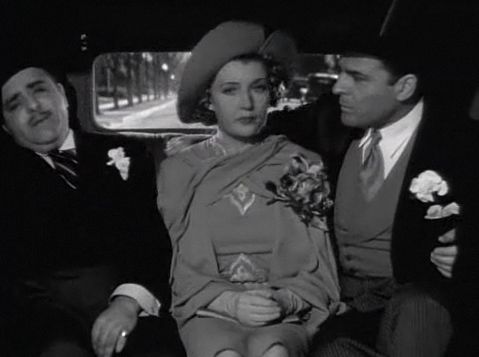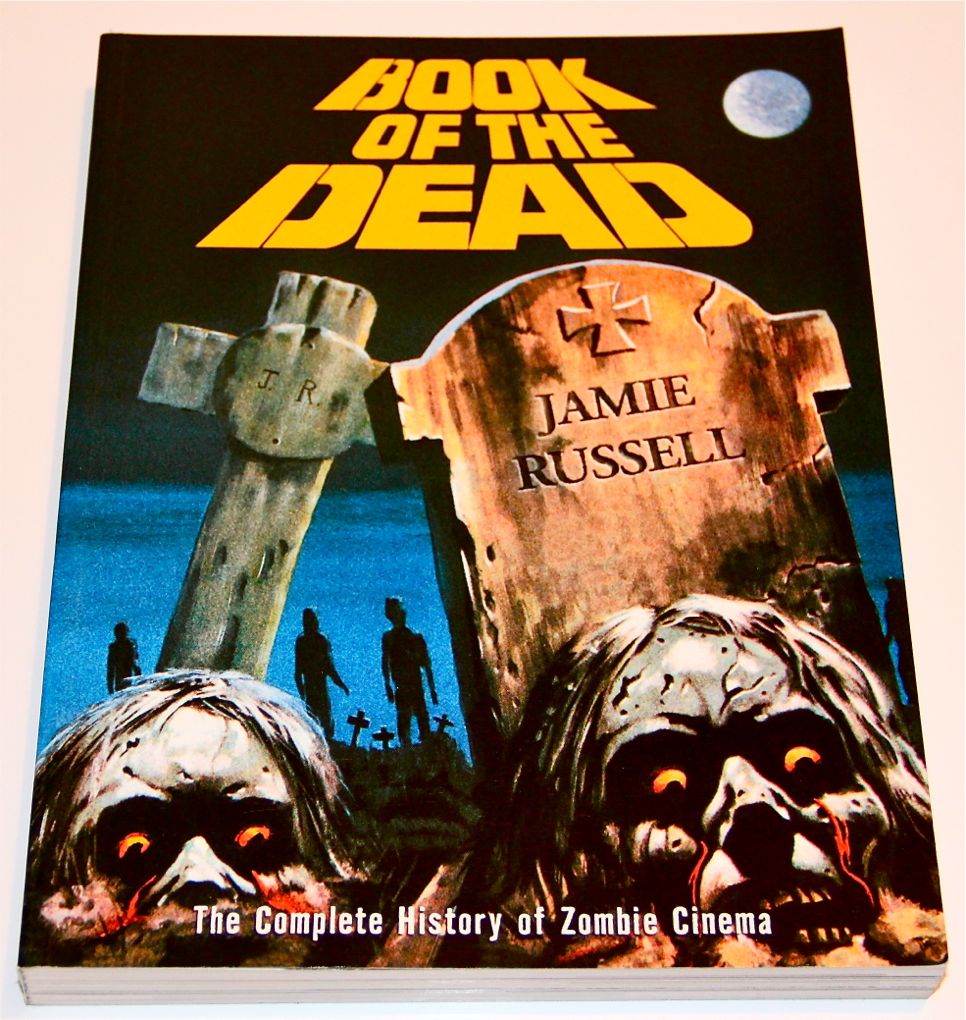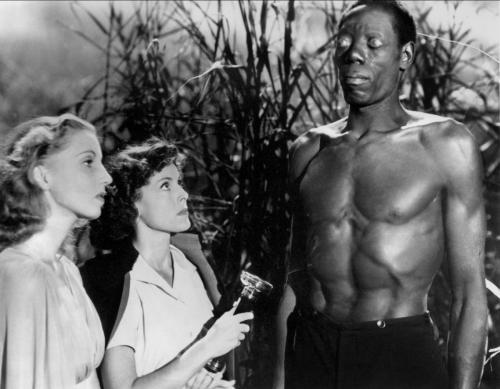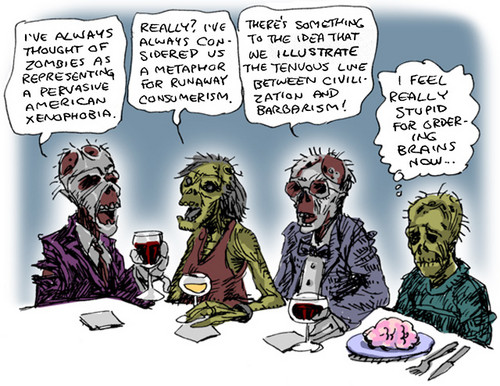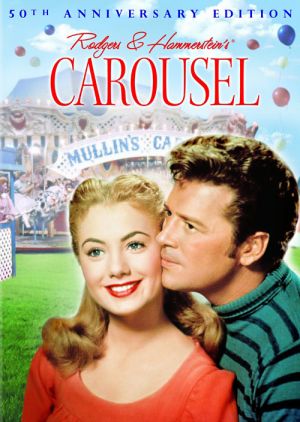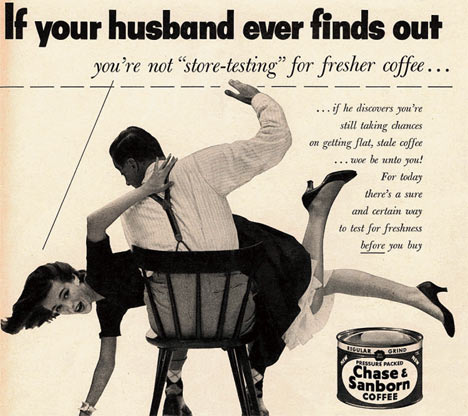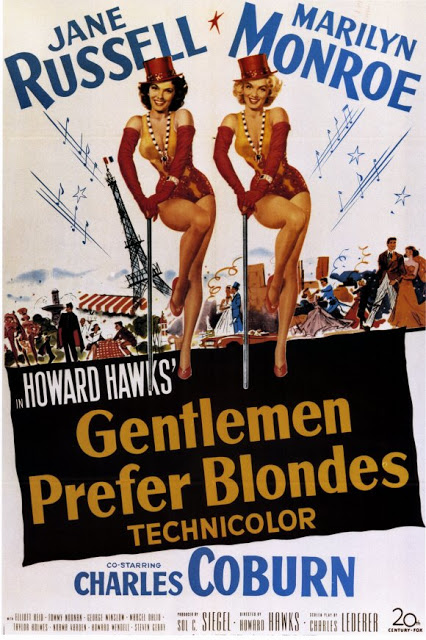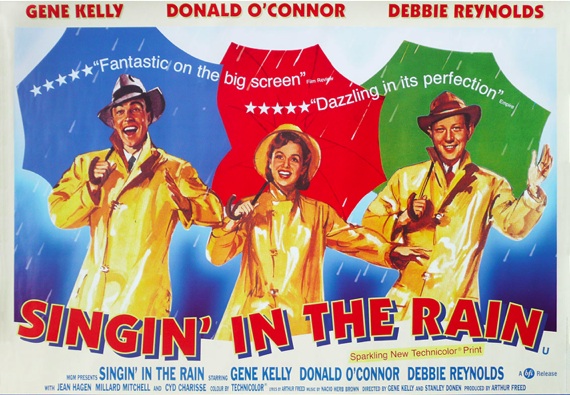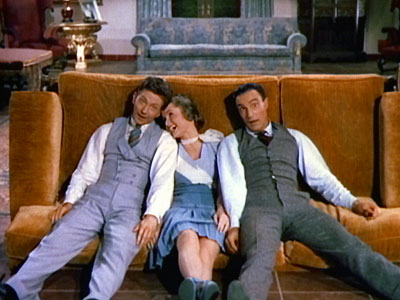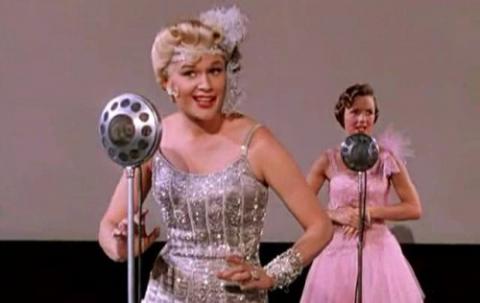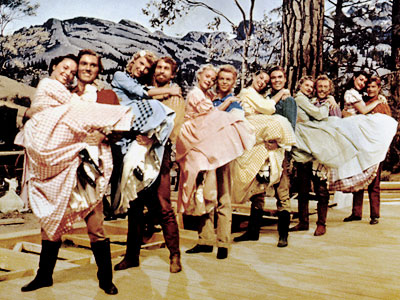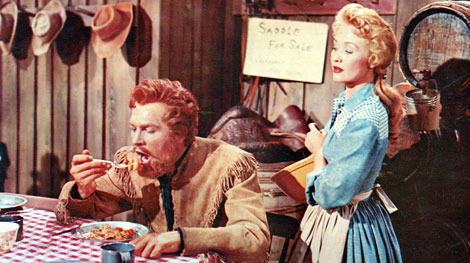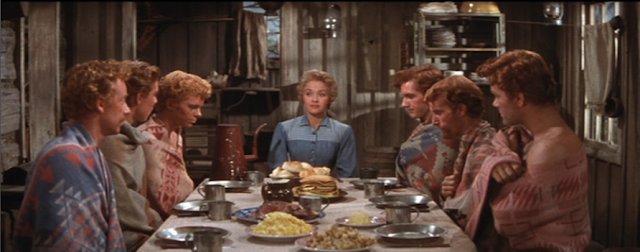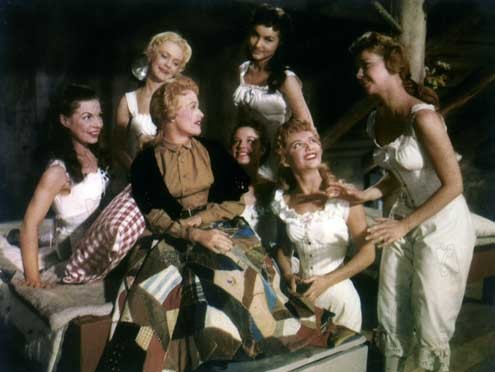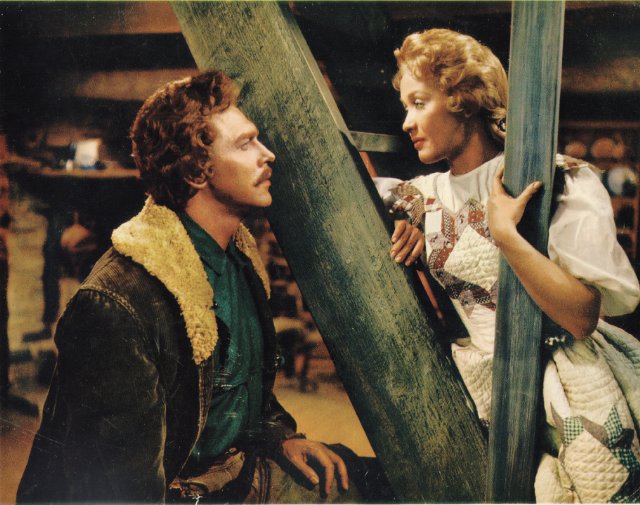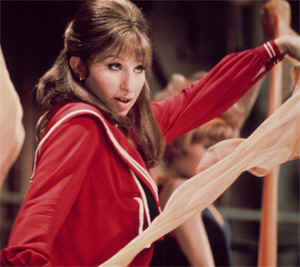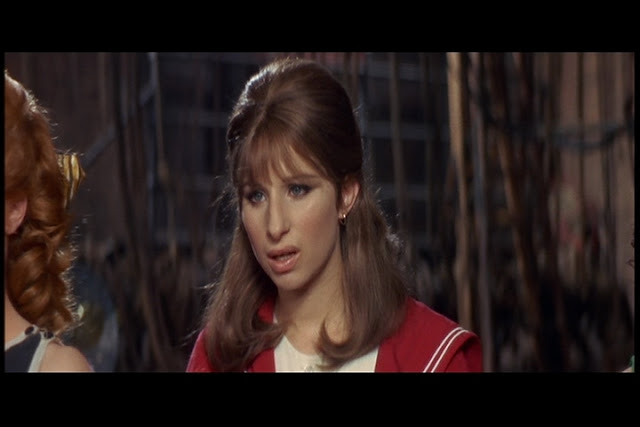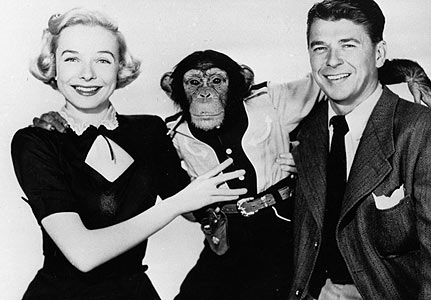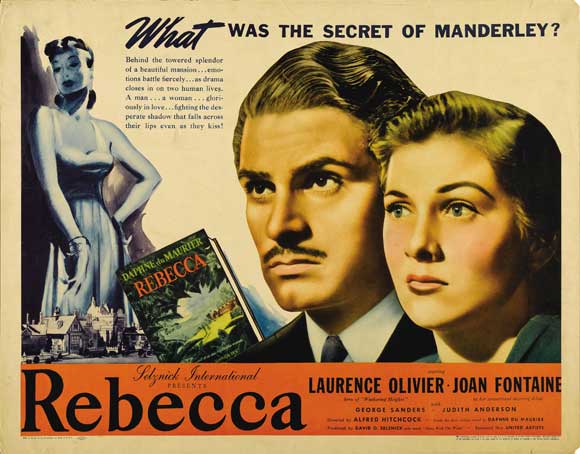 |
| Movie poster for Alfred Hitchcock’s Rebecca |
There is a trio of women at the heart of Rebecca. There’s a male love interest, to be sure – the dashing, wealthy, ostensibly noble Maxim de Winter – but at its most essential, Rebecca is a story of women: the unnamed protagonist, the second Mrs. de Winter; Rebecca de Winter, Maxim’s first wife, whose seeming omnipresence at the de Winters’ country seat, Manderley, haunts her replacement; and Mrs. Danvers, Manderley’s housekeeper, and Rebecca’s personal maid, devoted to her mistress even after death. The narrator of Daphne du Maurier’s 1938 novel and Alfred Hitchcock’s 1940 film adaptation might be the second Mrs. de Winter, but Rebecca – particularly the novel – doesn’t belong to her in the slightest. Despite a script which departs from the novel in several crucial instances and the talent of Laurence Olivier and Joan Fontaine, the story is Mrs. Danvers’s, and the film is Judith Anderson’s.
Rebecca recounts the story of the second Mrs. de Winter (Joan Fontaine), the new bride of the wealthy widower Maxim de Winter (Laurence Olivier), who married him after a whirlwind courtship. Though not especially acquainted with her frequently secretive, moody husband, she nevertheless adores him and, despite her modest upbringings, resolves to do her best as lady of the manor at Manderley. She meets with resistance, of course, from a likely corner, the housekeeper Mrs. Danvers (Judith Anderson), as well as from a more unlikely one, Maxim’s late wife Rebecca de Winter, who drowned tragically but whose ghost seems to haunt Manderley and its inhabitants in more ways than one. The second Mrs. de Winter finds herself at odds with Mrs. Danvers, who is by turns cruel and falsely sweet, and utterly bent on removing Mrs. de Winter from Manderley, at one point attempting to coax her into suicide. The film is something of a thriller, and so of course there are questions surrounding Rebecca’s mysterious drowning – particularly about Maxim’s part in it. Fortunately for our heroine and her romantic lead, Maxim is miraculously exonerated, in a disappointing departure from the novel, and Mr. and Mrs. de Winter, it is presumed, enjoy something of a happy retirement after the closing titles, despite a final act of revenge.
 |
| Mrs. Danvers (Judith Anderson) and the second Mrs. de Winter (Joan Fontaine) |
Rebecca, Hitchcock’s first Hollywood film, is beautifully shot and wonderfully acted, but it’s also caught, somewhat uncomfortably, between genres. It doesn’t quite want to be a true Gothic thriller, because it shies from the moral ambiguity that makes the novel such a rich book, but nor is it a straightforward romance, for nothing is ever straightforward with Alfred Hitchcock. Unfortunately, the major casualty of this uncertainty is the novel’s most interesting female character: the housekeeper, Mrs. Danvers, a brilliant turn by Judith Anderson. In the novel, Mrs. Danvers haunts each page just as much as the ghost of Rebecca de Winter. In Hitchcock’s hands, Rebecca becomes a cross between a Gothic thriller and a mannered romance, ultimately tending towards the latter, but even this does not fully temper Mrs. Danvers’s omnipresence: she is the link between the unnamed protagonist and the unseen antagonist, not the husband they share in common. However, the novel is full of contradictions in its characterization of Mrs. Danvers which the film does not address. Through the second Mrs. de Winter’s eyes we see Mrs. Danvers as “tall and gaunt,” with “great, hollow eyes,” a “skull’s face set on a skeleton’s frame,” and possessing of “limp and heavy, deathly cold” hands. While Judith Anderson’s costuming is not, perhaps, as skeletal as du Maurier intended, she nevertheless embodies the chilly lifelessness of her character. Her Mrs. Danvers is ghostly in her carriage, but terrifyingly real in her interactions with her new mistress. Yet in the film adaptation, the other-worldliness never leaves her, and Anderson plays it masterfully, creating a character who is deeply unsettling and deliciously spooky. But du Maurier’s novel tempers this description; the Danvers of the novel is not always an evil, unbalanced ice queen. She’s desperate and half-mad with grief, still living in the past and passionate about her mistress.
 |
| Mrs. Danvers (Judith Anderson) in Rebecca de Winter’s bedroom |
Hitchcock, however, is a director unafraid of ambiguity and a master of great subtlety, and he addresses the Rebecca-Danvers relationship most decisively in the pivotal bedroom scene, which prompts the second Mrs. de Winter into assuming more control of her household. Throughout, Judith Anderson keeps her delivery crisp and preternaturally calm, conveying Mrs. Danvers’s madness only with her eyes and movement, to great effect. The scene is as utterly disquieting on screen as it is in the novel, perhaps even more so, given the refinement of Judith Anderson’s performance. Danvers catches the second Mrs. de Winter in Rebecca’s closed-off bedroom in the west wing, and then proceeds to show her new mistress Rebecca’s personal things: her furs, still hanging pristinely in the armoire; her hairbrush, laid in exactly the same place; her nightdress, still laid out for the mistress who won’t return. It’s very easy to make it entirely Gothic in character – a bit of ghostly theatre to unsettle the new bride – but really, there’s much more at play. Again, however, the film and the novel are at odds: in the novel, there’s an undercurrent of grief for the late Rebecca that cuts through Danvers’s cruelty, such that the housekeeper is mad with grief, and motivated by love for her mistress. Death has not relinquished the hold Rebecca had on Mrs. Danvers; in fact, it’s intensified it. Judith Anderson is frighteningly convincing as she caresses Rebecca’s lace underwear, such that the scene is laced with an almost palpable degree of sexual tension and lesbian subtext. Mrs. Danvers’s passion for her mistress is undeniable, and the nature of that passion is left unspecified. The question of a lesbian subtext to the Danvers-Rebecca relationship is one to which the novel alludes as well, and it gives a layer of richness to Mrs. Danvers’s character. If there was a degree of romantic passion on Mrs. Danvers’s part, her grief becomes more sympathetic; her madness, more understandable. But in Rebecca, the scene must be viewed within the context of the film as a whole. Where, in the novel, the reader ultimately feels a degree of pity and sympathy for Mrs. Danvers, despite the assessment of the narrator, on screen, it’s simply, in the end, a briefly penetrating look into an unbalanced, hostile, malicious woman’s madness.
 |
| Mrs. Danvers showing Rebecca’s furs to the second Mrs. de Winter, part of the subtext-laden bedroom scene |

